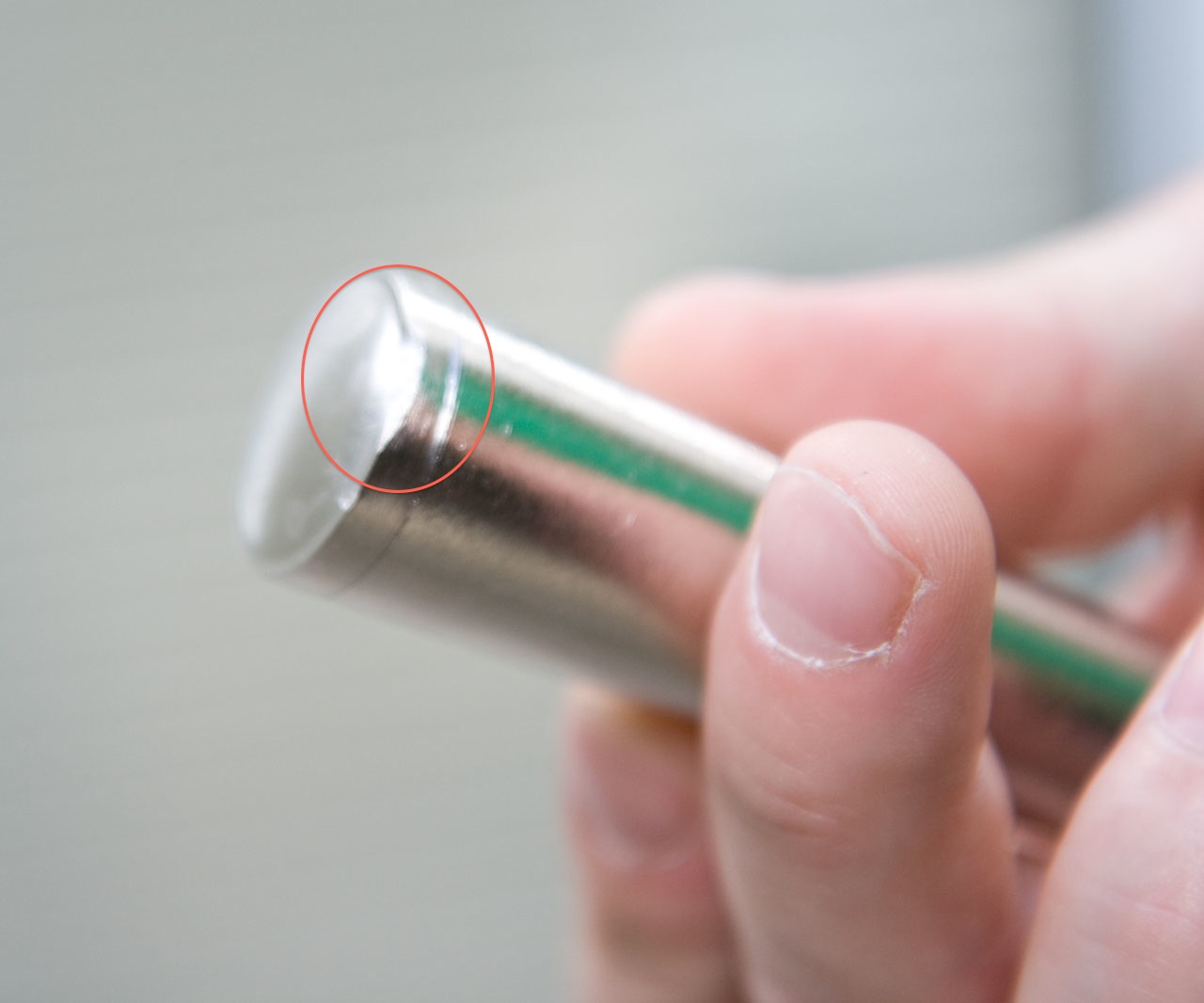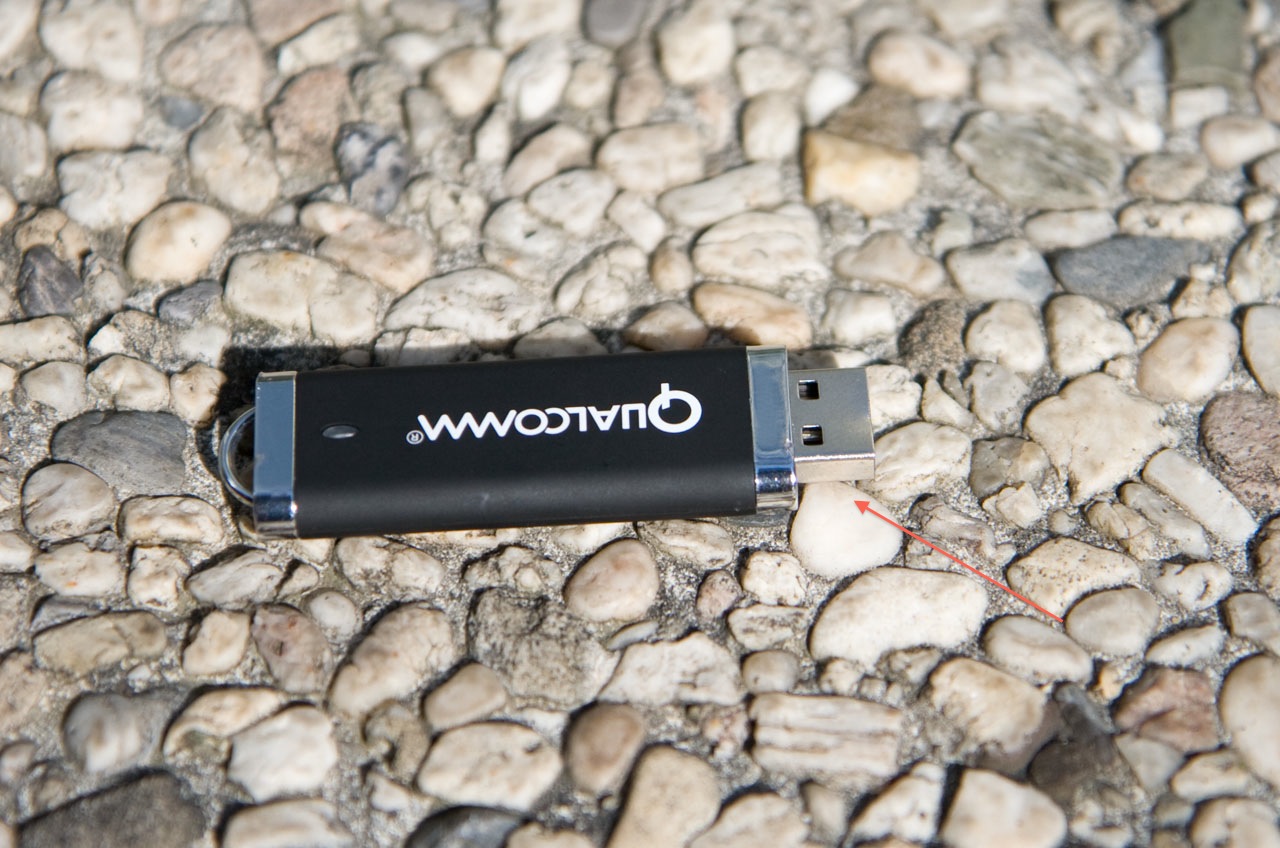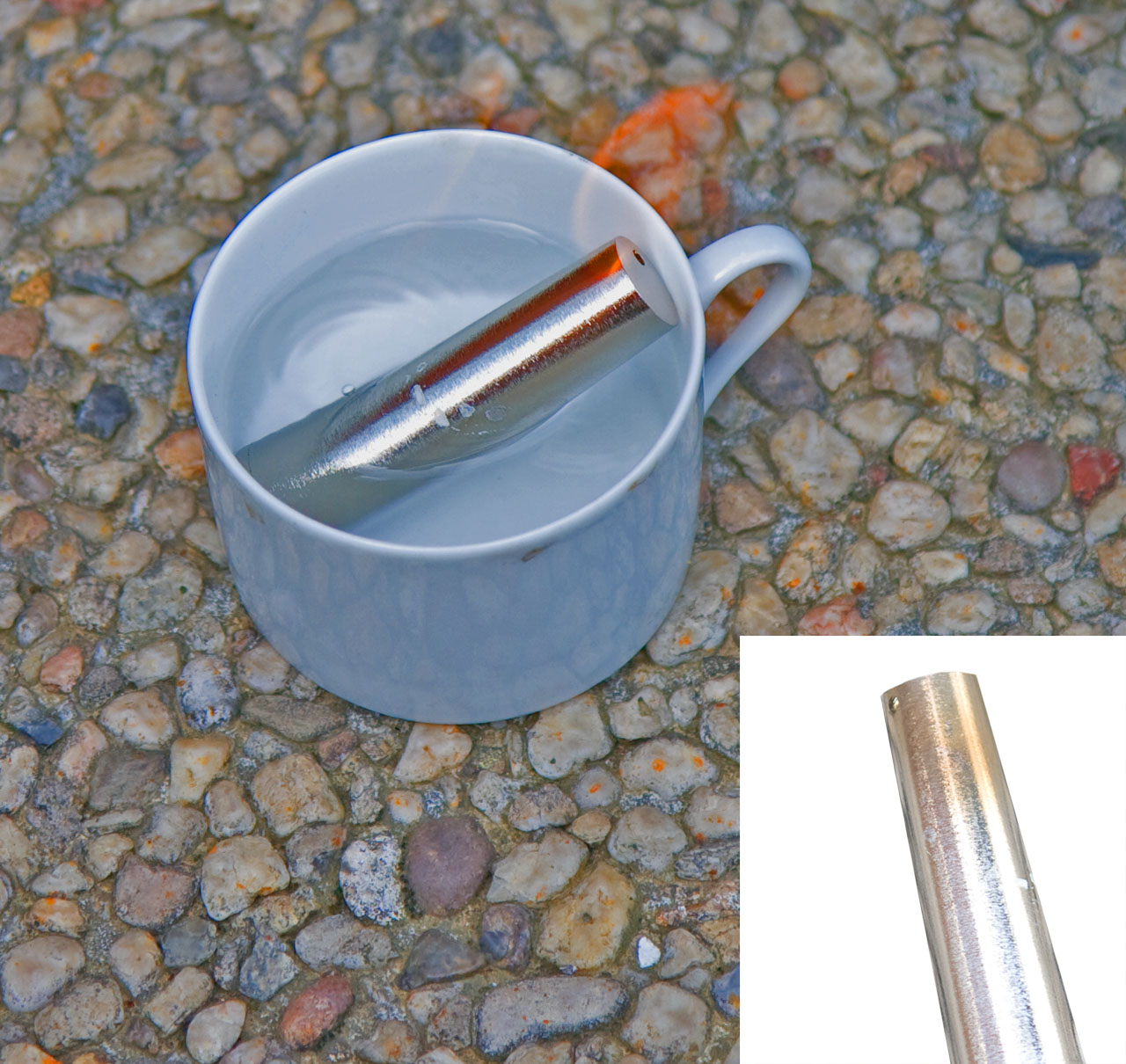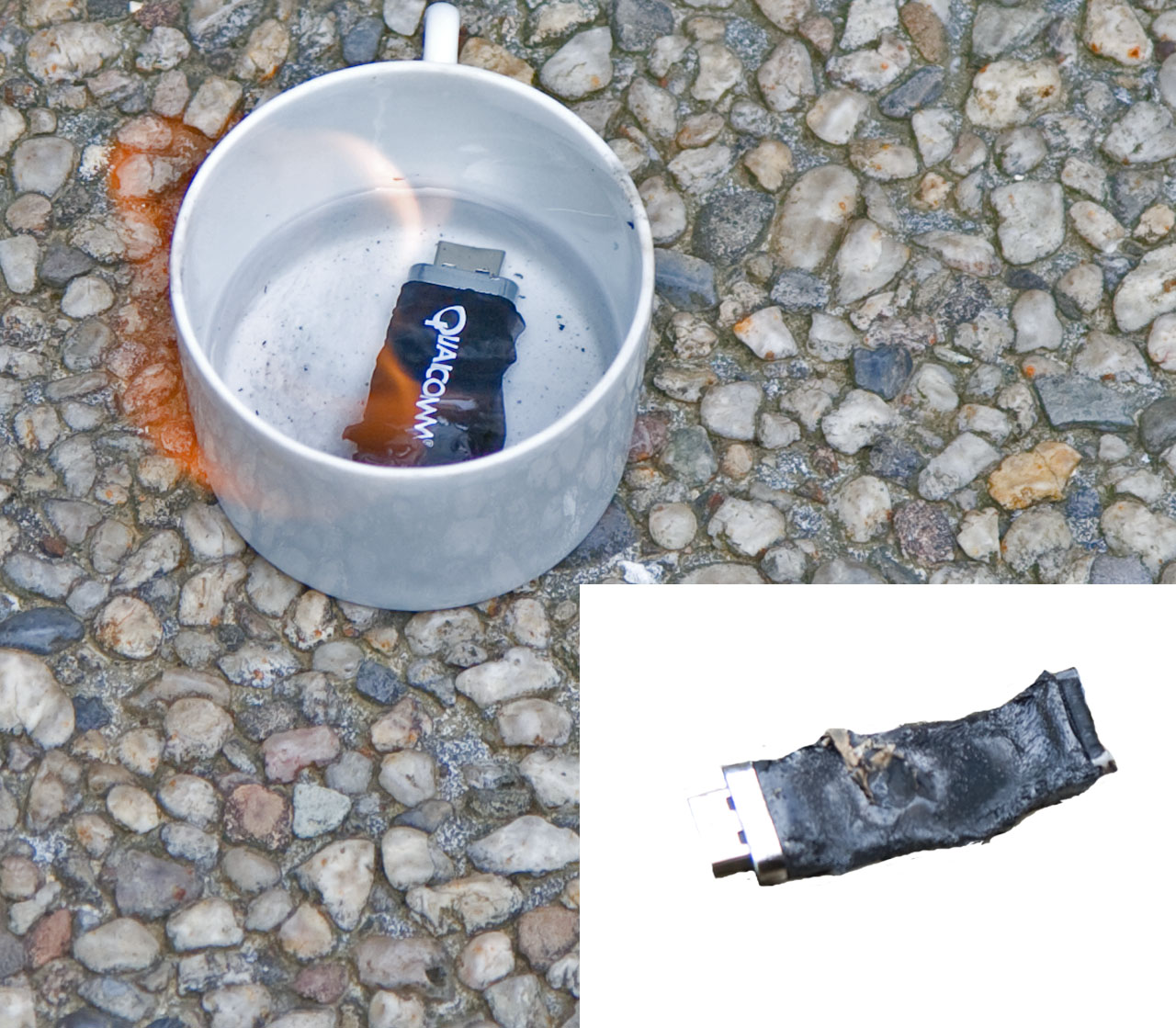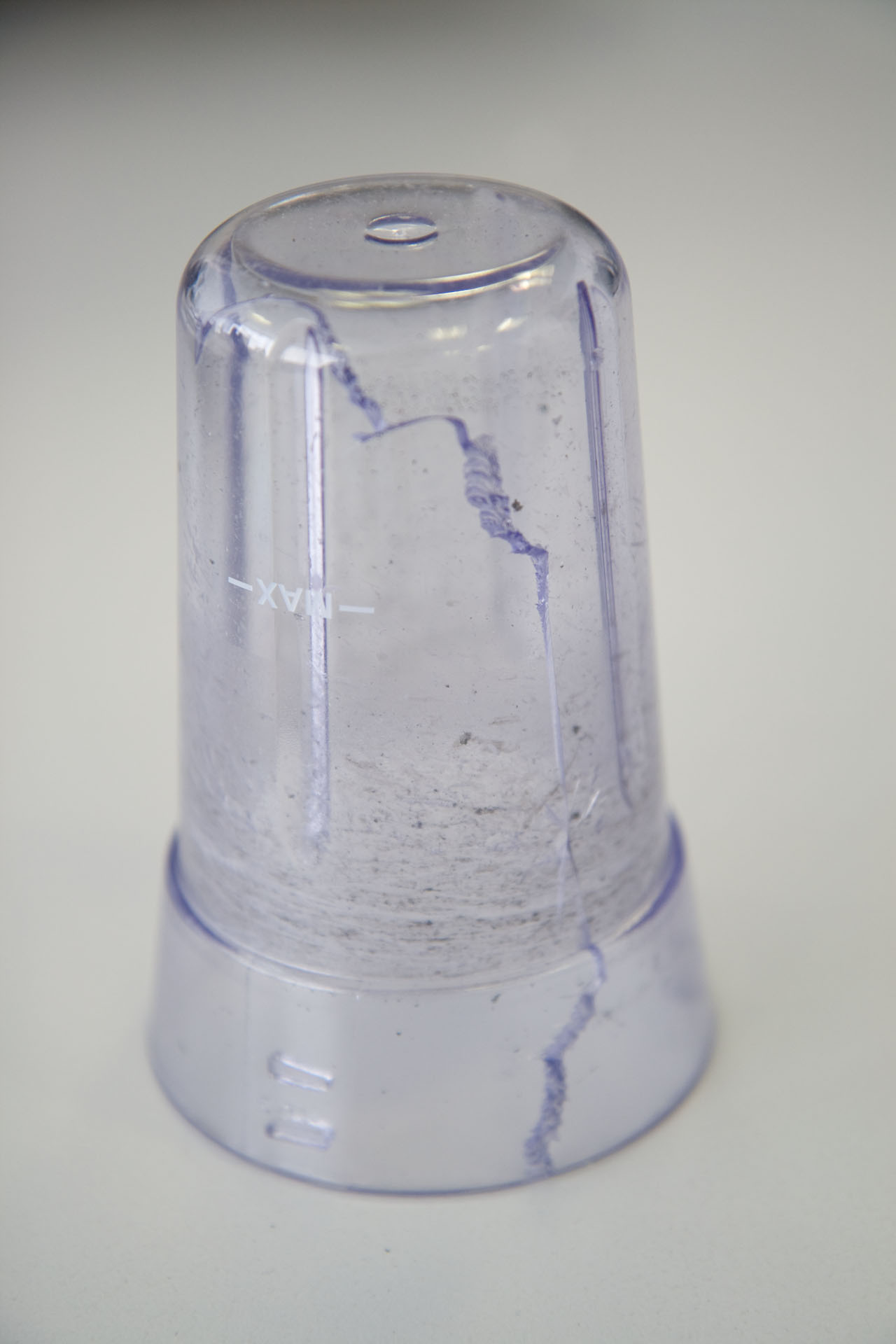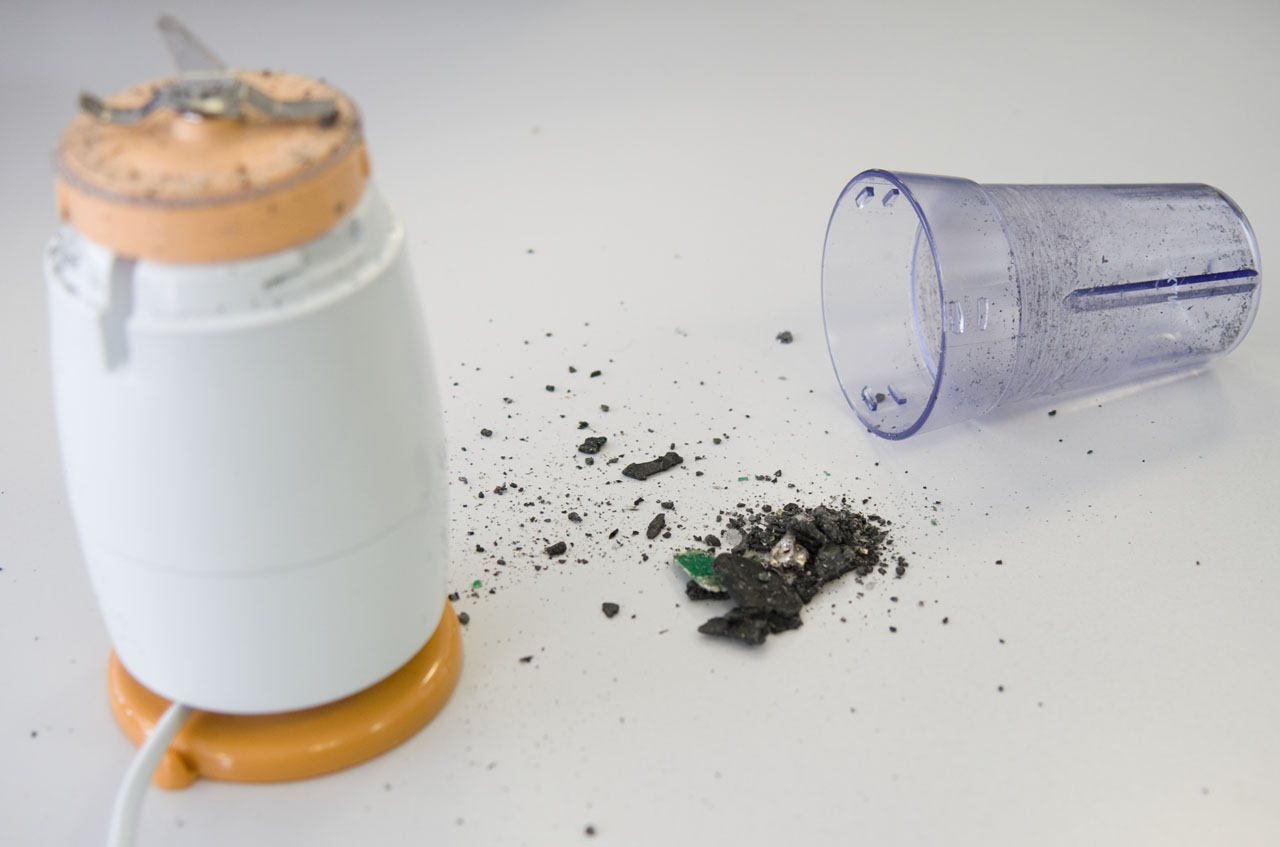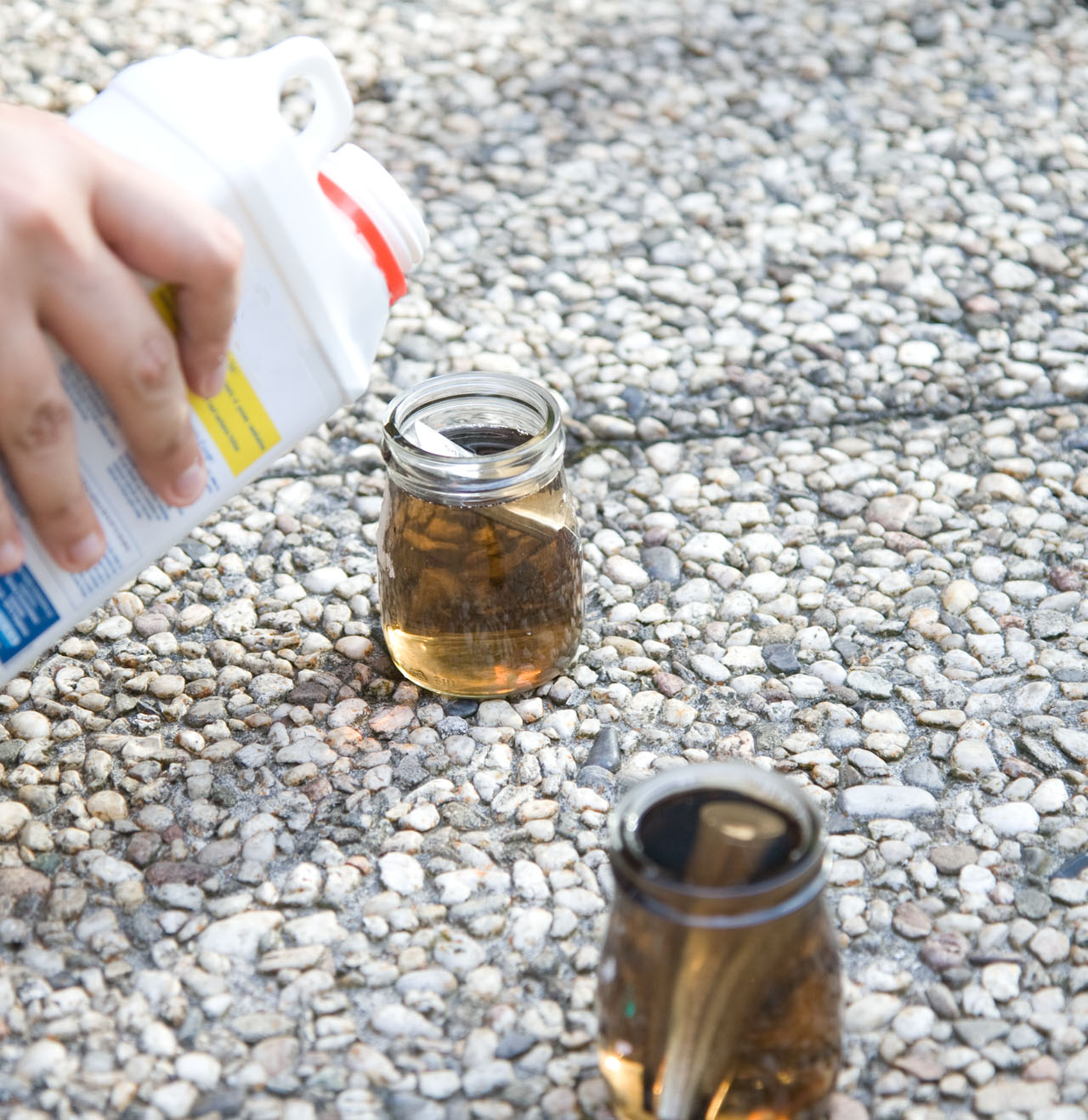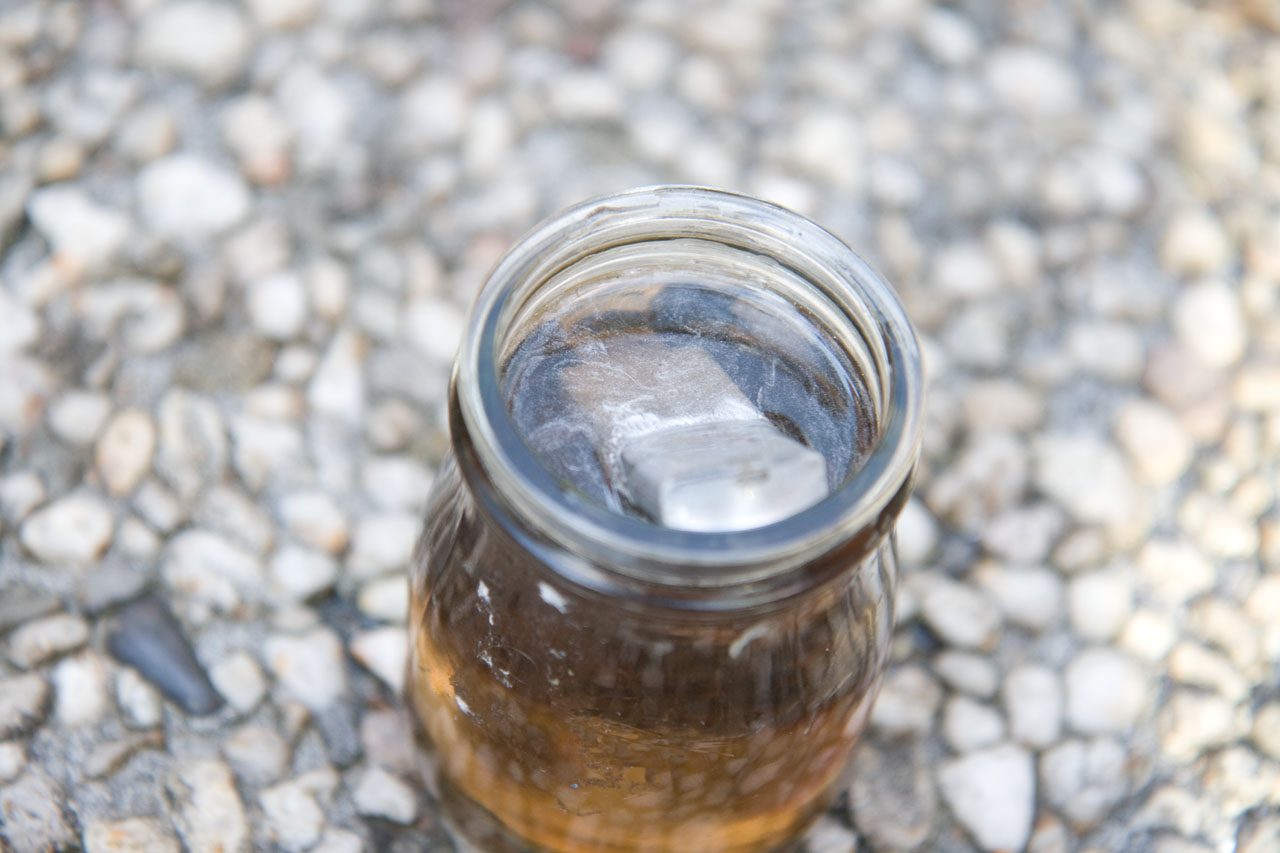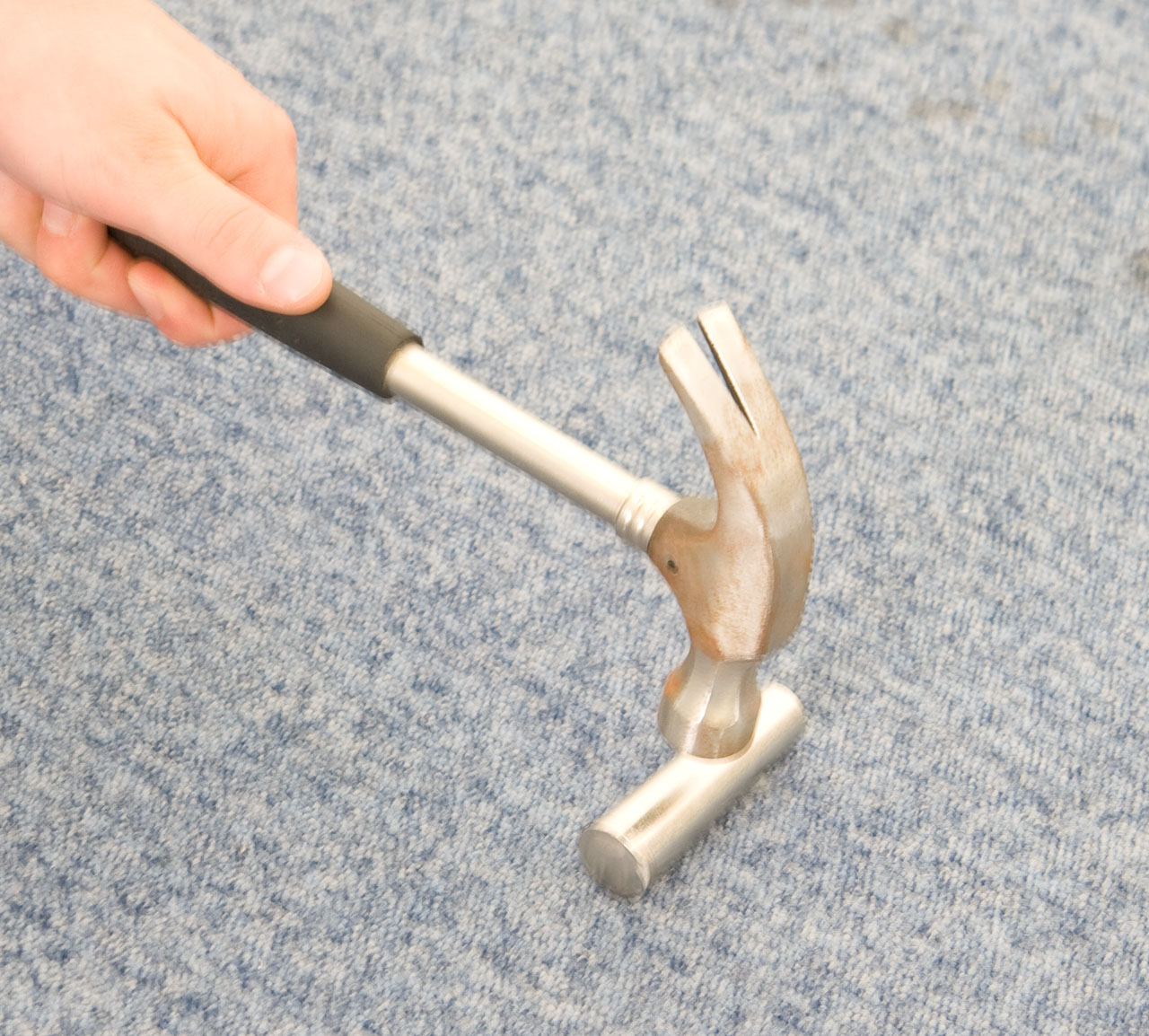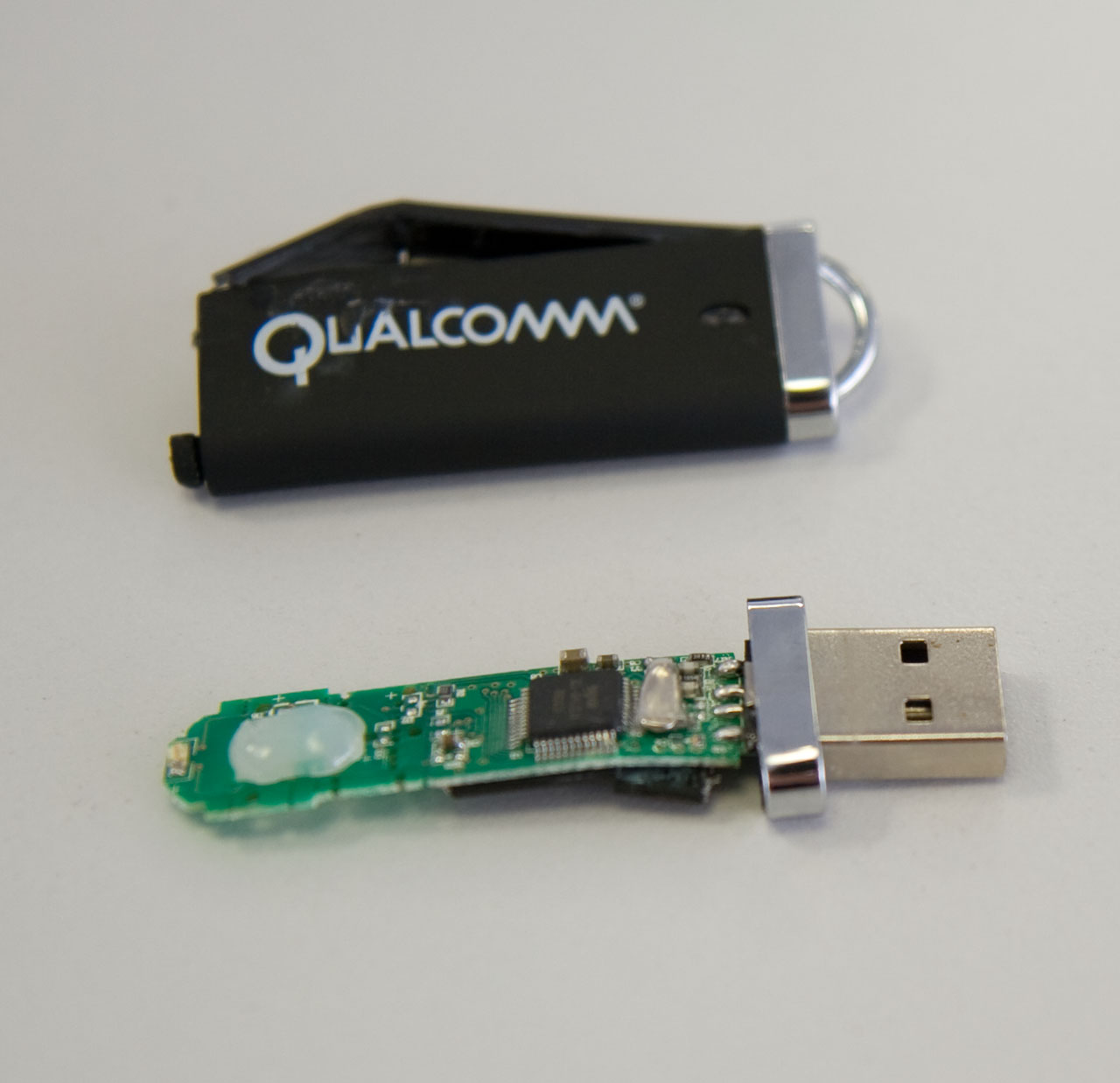On The...Torture Rack? LaCie's Unbreakable USB Thumb Drive
Test 6: Dropped Five Stories
The next test: we tossed the key out a fifth-floor window, onto a stone pavement.
Verdict: Finally, the LaCie USB key showed a slight sign of weakness. Nothing serious, mind you. It was only superficially damaged, and still worked.
Test 6: Dropped Five Stories, Cont.
Since our SanDisk USB key had quit working, we chose one made by Qualcomm. It's made of plastic, and not metal like the SanDisk.
Verdict: The USB connector was driven into the shell a little and twisted. But once the connector was pulled back into place, the key worked.
Test 7: Burnt In Alcohol
This one was a little more unrealistic--a real torture session. We immersed the key in 90% alcohol and set it on fire. Obviously, the temperature rose very quickly and the USB keys took the brunt of the combined effects of liquid and heat.
Verdict: The LaCie smelled a little burnt and looked a little scorched, but it was still working.
Test 7: Burnt In Alcohol, Cont.
The Qualcomm key, made of plastic, was obviously going to hold up less well. The shell melted and was twisted out of shape, but the drive survived.
Get Tom's Hardware's best news and in-depth reviews, straight to your inbox.
Verdict: The USB key, amazingly, worked. It looked so pitiful you wouldn't dare show it to your friends. But it worked.
Test 8: Will It Blend? That’s The Question
You're familiar with the famous series Will It Blend? Well, we did try it at home--with a low-cost blender. As we expected, the LaCie USB key won the contest. The photo shows the blender's container after a few seconds (we stopped it before it was completely destroyed).
Verdict: The LaCie USB key was tougher than the blender.
Test 8: Will It Blend? That’s The Question, Cont.
For our Qualcomm USB key, it was the end of the line. It stood up to a five-story fall and flaming alcohol, but it was no match for the blender. The little pile of debris you see beside it is all that's left of the poor Qualcomm key.
Verdict: Plastic USB keys aren't comfortable in blenders.
Test 9: Acid
Next came the acid test. Caustic soda had no effect. Maybe sulfuric acid would? We gave the USB keys a little bath in a substance the crew of the Nostromo learned to handle with a great deal of respect.
Verdict: The metal the key is made of is indeed durable.
Test 9: Acid, Cont.
Our new control USB key (the previous one was literally pulverized) was handed out at a press conference, from Philips. Once it emerged from the acid (after 30 minutes), the plastic had become a little transparent, but the key didn't seem to have suffered. It refused to work, though.
Verdict: Plastic isn't comfortable in sulfuric acid. That's 3-0 in favor of the LaCie USB key.
Test 10: Putting Tom's Hammer Down
Being Tom's Hardware, we felt one very simple test was de rigueur--our trademark hammer. And the easiest test to conduct may have been the one that did the most damage.
Verdict: For all we know, the LaCie XtremKey still works. But the hammer blow smashed in the shell and the USB key itself was trapped in its protective casing. It was impossible to open it, so we had won--by a TKO--the battle against LaCie's “unbreakable” USB key.
Test 10: Putting Tom's Hammer Down
For our fourth (and last) control USB key, we used a clone of the second one, a model from Qualcomm. And the hammer blow was fatal; the plastic shell wasn't able to protect the PCB, and a corner was knocked off the memory.
Verdict: Don't use a hammer on your USB key.
-
Why not try get a gun a shoot the LaCie USB drive and see if it is able to stop a bullet? If so, i will buy right away...Reply
-
alikum jupiter optimus maximusWhy not try get a gun a shoot the LaCie USB drive and see if it is able to stop a bullet? If so, i will buy right away...And chain them together and use as bullet proof vest?Reply -
iam2thecrowe you forgot the washing machine test (my usb stick has been through twice and survived) and the run over it with a lawnmower test (again my usb key survived!)Reply -
ta152h Next time use a better acid. Nitric Acid will dissolve many things normal acids can't. Of course, Hydrofluoric Acid would work quite well on just about anything, although not a strong acid.Reply
I would strongly recommend one more test. Let a goat eat it, and see what happens. The damn things eat cans, so they have a chance against this thing. If the goat displays unusually good memory a little while after eating it, you'll have your answer. -
jj463rd Some thermite with an igniter will do it in.So will some R.D.X. with a #8 blasting cap too.Reply -
cangelini Had this been performed in the US (our French team wrote it), you *know* I would have taken as much California-legal firepower to it as possible. Ever since that "CPU Shootout" two April 1sts ago, I've been itching to put a few more rounds into hardware.Reply
Call it payback for pre-production components that keep me up late at night troubleshooting...
